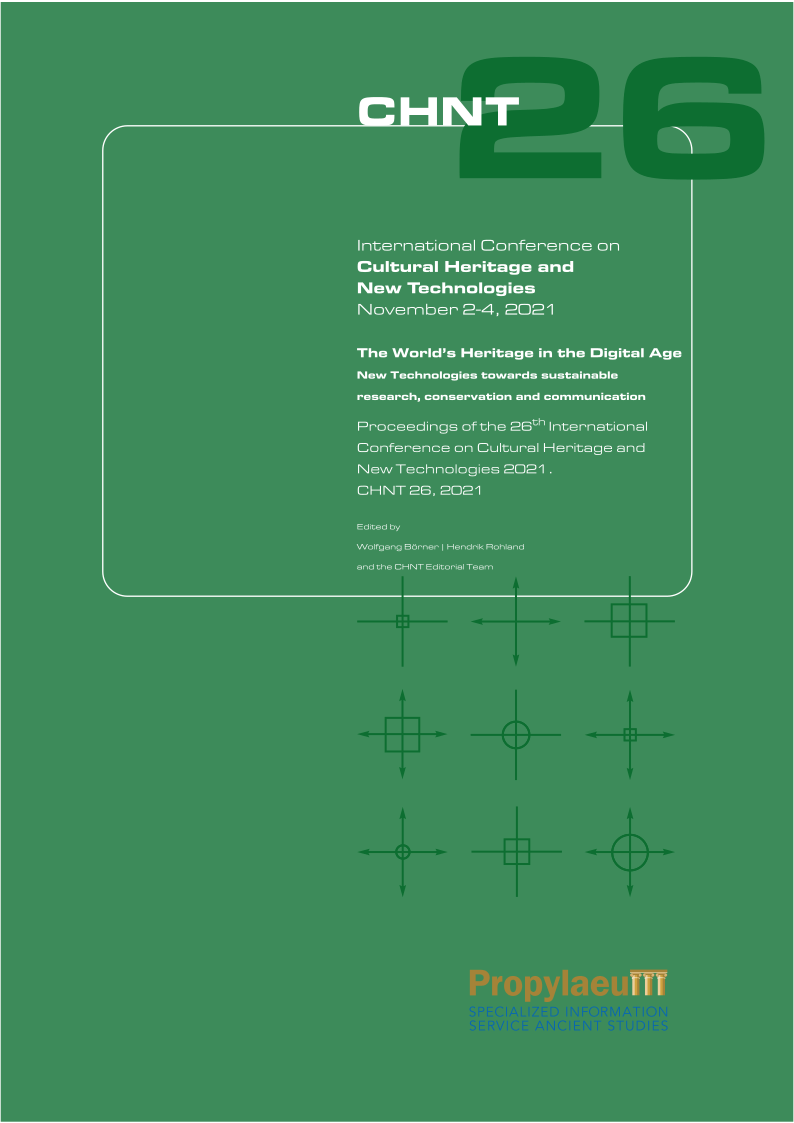From Virtual Tourism 1.0 to 2.0
Applying New Media to Support Sustainable Research, Conservation, Communica-tion, and Accessibility
Keywords:
virtual_tourism, yorescape, peer_review, metaverseAbstract
Through the introduction of Yorescape™, a streaming app for virtual tourism developed by Flyover Zone, this article explores the implication and application of virtual tourism on the cultural heritage tourism sector. Examining the features of current virtual tours in comparison to those offered by Yorescape, the concepts of Virtual Tourism 1.0 and Virtual Tourism 2.0 are introduced and viewed through the lenses of presence, immersion, interactivity, social engagement, accessibility, and user empowerment. Differences in information reliability, creation, and transparency between the two are also explored before a model on third-party peer-reviewed virtual experiences is presented.
References
Bec, A., Moyle, B., Schaffer, V. & Timms, K. (2021). ‘Virtual reality and mixed reality for second chance tourism’ Tour-ism Management, 83. DOI: 10.1016/j.tourman.2020.104256.
Debusmann Jr, B. (2020). 'Coronavirus: Is virtual reality tourism about to take off?', BBC. [Online]. Available at: https://www.bbc.com/news/business-54658147 (Accessed: 8 April 2021).
El-Said, O. & Aziz, H. (2021). ‘Virtual tours a means to an end: An analysis of virtual tours’ role in tourism recovery post covid-19’ Journal of Travel Research. DOI: 10.1177/0047287521997567.
Flavián, C., Ibáñez-Sánchez, S. & Orús, C. (2019). ‘Integrating virtual reality devices into the body: Effects of technological embodiment on customer engagement and behavioral intentions toward the destination’ Journal of Travel & Tourism Marketing, 36 (7), pp. 847-863. DOI: 10.1080/10548408.2019.1618781.
Frischer, B. (1988). “Cicero. A Framework for Multimedia Projects for Classics,” in Interactive Media, edited by Sueann Ambron and Kristina Hooper (Microsoft Press, Redmond) 144-156, 300-302. Available online at https://www.academia.edu/38081245/Edmund_Buchners_Solarium_Augusti_New_Observations_and_Simpirical_Studies (Accessed: 20 January 2022).
Frischer, B. (2016-2017). “Edmund Buchner’s Solarium Augusti: New Observations and Simpirical Studies,” Rendi-contwe della Pontificia Accademia Romana dwe Archeologia 89:3-90. Available online at https://www.academia.edu/36446114/Cicero_a_framework_for_multimedia_projects_for_Classics (Accessed: 20 January 2022).
Gravari-Barbas, M., Bourdeau, L., & Robinson, M. (2016). World heritage and tourism: From opposition to Co-production. In L. Bourdeau, M. Gravari-barbas, & M. Robinson (Eds.), World heritage, tourism and identity: Inscrip-tion and Co-production (pp. 1–24). Routledge.
Manning, N. (2014). How to be a tour guide. The essential training manual for tour managers and tour guides.
Montana, J. I., et al. (2020). ‘The benefits of emotion regulation interventions in virtual reality for the improvement of wellbeing in adults and older adults: A systematic review’ J Clin Med, 9 (2). DOI: 10.3390/jcm9020500. Available at: https://www.ncbi.nlm.nih.gov/pubmed/32059514.
Musselwhite, C. (2017). 'Virtual and imaginative mobility: How do we bring the outside indoors and what happens when mobility is no longer available?', Transport, travel and later life Transport and sustainability, pp. 197-205.
Piccione, J., Collett, J. & De Foe, A. (2019). ‘Virtual skills training: The role of presence and agency’ Heliyon, 5 (11). DOI: 10.1016/j.heliyon.2019.e02583 Available at: https://www.ncbi.nlm.nih.gov/pubmed/31840112.
Robinson, P., editor. (2012). Tourism. The Key Concepts (Routledge, Abingdon).
Shafer, D. M., Carbonara, C. P. & Popova, L. (2014). ‘Controller required? The impact of natural mapping on interactiv-ity, realism, presence, and enjoyment in motion-based video games’ Presence: Teleoperators and Virtual Envi-ronments, 23 (3), pp. 267-286. DOI: 10.1162/PRES_a_00193.
Singh, D. K. A., et al. (2017). ‘Impact of virtual reality games on psychological well-being and upper limb performance in adults with physical disabilities: A pilot study’ Med J Malaysia, 72 (2), pp. 119-121. Available at: https://www.ncbi.nlm.nih.gov/pubmed/28473675.
Skandalis, A. (2020). 'Virtual reality has been boosted by coronavirus – here’s how to avoid it leading us to dystopia', The Conversation. [Online]. Available at: https://theconversation.com/virtual-reality-has-been-boosted-by-coronavirus-heres-how-to-avoid-it-leading-us-to-dystopia-141073 (Accessed: 8 April 2021).
Tussyadiah, I. P., Wang, D., Jung, T. H. & tom Dieck, M. C. (2018). ‘Virtual reality, presence, and attitude change: Empirical evidence from tourism’ Tourism Management, 66 pp. 140-154. DOI: 10.1016/j.tourman.2017.12.003.
Twilio (2020). Covid-19 digital engagement report. [Online]. Available at: https://www.twilio.com/covid-19-digital-engagement-report (Accessed: 8 April 2021).
UNWTO (no date). “Tourism and Culture,” available online at: https://www.unwto.org/tourism-and-culture (seen March 1, 2022).
UNWTO (2018). Tourism and Culture Synergies. Available online at: https://www.e-unwto.org/doi/epdf/10.18111/9789284418978 (seen March 1, 2022).
UNWTO (2019). International Tourism Highlights 2019 Edition. Available at: https://www.e-unwto.org/doi/pdf/10.18111/9789284421152 (seen March 1, 2022).
UNWTO. (2020). UNWTO World Tourism Barometer May 2020: Special focus on the Impact of COVID-19. https://doi.org/10.18111/9789284421817.
Yung, R., Khoo-Lattimore, C. & Potter, L. E. (2021). ‘Vr the world: Experimenting with emotion and presence for tourism marketing’ Journal of Hospitality and Tourism Management, 46 pp. 160-171. DOI: 10.1016/j.jhtm.2020.11.009.
Downloads
Published
Conference Proceedings Volume
Section
License
Copyright (c) 2024 Bernard Frischer, Dr. Ryan Yung

This work is licensed under a Creative Commons Attribution-NonCommercial-NoDerivatives 4.0 International License.
The CHNT older Proceedings are licensed under the creative commons license CC BY-NC-ND 3.0.
From the issue 26 on, they will be licensed under the creative commons license CC-BY-SA 4.0


